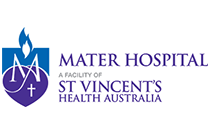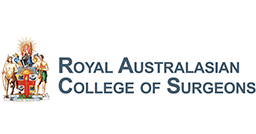Minimally Invasive Posterior Approach Total Hip Replacement
The ‘Posterior’ or ‘Southern’ approach involves splitting the large muscle of the buttock called the gluteus maximus. You will be in the ‘lateral position’, on your side with padded supports to keep you in this position throughout the operation. Dr. Thornton-Bott will then prepare and drape your hip to create a sterile field. The incision is over the bump on the side of your hip called the greater trochanter (GT) and curves posteriorly over your buttock. The incision is about 15cm long.
The gluteus maximus muscle is split along its fibres and separated to identify the underlying greater trochanter and the gluteus medius muscle that attaches to it. The bursa is a layer of tissue that allows smooth movement of tissues over the prominent trochanter. This is detached from the GT and reflected back to identify the underlying muscles called the short external rotators.
These muscles are detached from the back of the GT to identify the underlying hip joint capsule. The capsule is divided from the socket of the hip and the femoral neck to expose the underlying hip joint.
After assessing leg length with a calibration device, Dr. Thornton-Bott dislocates your hip to expose the femoral neck which is then cut to remove the damaged head and cartilage.
The femur is then reflected up and out of the way to expose the deeper acetabulum, or socket of the hip joint. Special retractors are placed to give a good view of the socket. Hemispherical reamers are used to remove the arthritic cartilage and bone to prepare the socket for the new cup. The new titanium cup is inserted into the prepared socket, taking great care to position it accurately. A plastic liner is inserted into the cup.
The femur is then exposed again and special rasps or broaches are used to shape the top of the femur to allow insertion of the metal femoral stem. Once the correct size has been established the final metal stem is either press-fit or cemented into the femoral canal. A new femoral head, or ball is applied to the stem and the hip reduced back into the new socket.
The determination of which stem is used is usually on age, and a general cut off of 70 years is used, with patients above 70 having a cemented stem and those younger getting an uncemented stem. However, Dr. Thornton-Bott will regularly use uncemented stems in older patients with strong bone and will cement stems in younger patients if their bone is not so strong. Both methods have excellent results. Some surgeons will ALWAYS cement the stem and some surgeons are happy to use uncemented stems in ALL patients. Dr. Thornton-Bott believes each patient should get the best implant for their individual needs and so will choose accordingly.
The hip is then assessed by Dr. Thornton-Bott for stability and leg length and once he is happy that he has recreated accurate leg length and the hip is very stable he will then proceed to close the wound. This involves a vigorous wash of the area with saline to minimise the risk of infection and infiltration with a large amount of local anaesthetic. The short external rotators and capsule are then reattached back to the femur with sutures through drill holes in the GT (trans-osseous posterior repair). This is the final step in minimising the risk of dislocation. The trochanteric bursa is repaired and the gluteus maximus muscle is returned to its original position and the layers closed with sutures.
Dr. Thornton-Bott DOES NOT USE STAPLES but closes the skin carefully with a dissolving suture in the skin edges which leaves a fine neat scar. The wound is dressed with a waterproof dressing which allows you to shower.
What happens after this operation?
Following a posterior approach hip replacement, certain precautions must be followed to protect the trans-osseous repair of the muscles until there is sufficient healing. These include:
- Sleeping on your back
- No deep bends from the waist
- No excessive internal rotation of the hip
These must be followed for 6 weeks.
Dr. Thornton-Bott ensures the stability of the hip mechanically during surgery and will never close a hip until he is happy that the hip is stable. If ANY total hip replacement is pushed far enough, it will dislocate. The trans-osseous repair creates a ‘check rein’ that tells you you are putting the hip in a dangerous position, prevents you going any further and so reduces the risk of dislocation.
Using his surgical experience, accurate assessment during the operation and careful posterior repair, Dr. Thornton-Bott has had only one dislocation of a primary hip replacement since 2006. This was in a lady who was 2 weeks post op who put her foot on the edge of the bath, leaned forward, flexing at the hip and turned her hip inward so that she could shave the back of her calf! Every position she was told she should NOT put her hip into!













